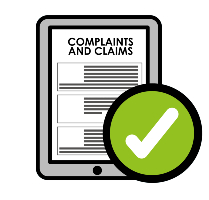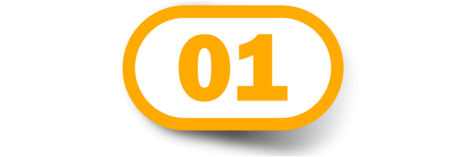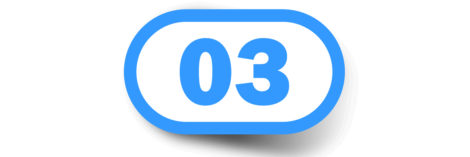Cybersquatting is a widespread practice on the Internet. It aims at taking advantage of a brand or a person’s notoriety to attract users to its page. It is a process based on typos found in the URLs of the websites of the targeted domains. There are different types of cybersquatting, all with different objectives and more or less severe legal consequences. Among the companies targeted by this practice, we find names like Microsoft, eBay, and even Donald Trump.
Contact us for your inbound marketing strategy
Summary
- The definition of cybersquatting
- 3 different types of cybersquatting
- 3 ways to fight cybersquatting
- 2 known examples of cybersquatting
The definition of cybersquatting
Cybersquatting is the illegal use of domain names similar to trademarks. Any person, whether an individual or a corporation, can be a victim of this:
- Trademarks with commercial purposes
- Associations
- The names of famous individuals are subject to cyber-attacks
Cybersquatting brings together different concepts which you can use in various fields. The name “cybersquatting” comes from the English word “squat.” In the ICT domain, the term refers only to the squatting of domain names that their original owners have not registered. This practice is condemnable because it undermines a brand for profit and online visibility.
Contact us to research your organization’s notoriety
3 different types of cybersquatting
As mentioned before, this process combines many practices to capture a domain’s traffic. Here are the 3 most common types of squatting online.
Typo squatting
One of the most common types of cybersquatting is typo squatting. Here, the cybersquatter purposely buys well-known domain names with bad spelling. The idea is to build a fake website visitors will visit when they make a typo. The longer a domain name is, the more possible spellings there are. Thus, having a short name is a good practice to reduce the risks associated with cybersquatting.
Many companies have addressed the problem and recovered the disputed domains’ rights. They have them redirected to their main website, which allows them to obtain qualified natural traffic. The most common application of typo squatting is to display advertising links with the same theme as the targeted brand.
Domain grabbing
This is one of the most typical forms of cybersquatting. It consists of registering a domain name to sell it to its legitimate owner. And apart from the simple domain name, there is also the problem of the TLD (top-level domains). For example, the TLD for the website intotheminds.com is .com.

Direct negotiation is necessary if a cybersquatter registers your domain name before you can renew it. It is advisable to devote part of your budget to the preventive purchase of similar domain names.
Gripe sites
Gripe websites are part of the debate on freedom of expression. Indeed, they exist to criticize all sorts of things:
- Some public figures: business people, politicians, top athletes, and so on.
- Structures: companies, organizations, political parties, and so on.
Following a complaint of Jerry Falwell against Christopher Lamparello, the justice will give reason to the cybersquatter. The American reverend Jerry Falwell paid for it in 2005: it is the Lamparello v. Falwell case. Indeed, the website fallwell.com used his misspelled name to refute homophobic accusations. For cause, no commercial element appeared on the misspelled website. It did not infringe on any brand.
3 ways to fight cybersquatting
The field of possibilities is vast for squatters. That’s why it is necessary to intervene upstream and downstream to keep control over your brand image.

Be more careful with domain names similar to yours
As a general rule, the first thing to check is whether the domain name leads to a website. If the domain name is for “sale” or “under construction,” it is certainly a cybersquatter. This also applies to pages mainly composed of advertisements for products/services related to your brand.

Get in direct contact with the owner of the problematic domain
Determine if there is a logical explanation for using the domain name or if the registrant is willing to sell you the name. Before drawing any conclusions, contact the domain name holder. Sometimes the domain holder’s goal is not cybersquatting. Therefore, before going to court, you should consider speaking directly with the domain owner.


Register the brand name to prevent any risk of cybersquatting
As soon as possible, register the company’s brand name. Only the owners of the brand are protected. This is essential to ensure that you get regulatory protection. Today there are brand name protection services to take care of the paperwork:
- Nova Graaf
- Boip
- CSC
- etc.
2 known examples of cybersquatting
Let’s end this article by mentioning 2 well-known cases that have shaped the face of cybersquatting. The examples of Microsoft and Donald Trump show a surprising reality. Indeed, the biggest companies and personalities in this world are not immune to cybersquatting campaigns.
Microsoft in front of a young student
Mike Rowe created MikeRoweSoft.com in 2003 to market his web design services. He did so because of the phonetic pun that sounded like “Microsoft.” Still, because the domain could be phonetically confused with Microsoft.com, the large company demanded that he transfer the domain name. After a major public backlash against the company, they reached an out-of-court settlement.
Overnight, the case made international headlines. Rowe’s website received 250,000 hits in 12 hours and was so overwhelmed with traffic that it had to be moved to a new service provider, who volunteered to host the site for free. They will settle the case out of court. Among other things, the Canadian student will receive an Xbox console, the prize of peace and control for Microsoft.
Even Donald Trump can’t escape cybersquatting
A judge ruled that a man from Brooklyn who had registered domain names similar to those of Donald Trump. J. Taikwok Yung, who describes himself as a “domainer,” created four websites to parody the former president. The amount required was $32,000 in damages, while Donald Trump claimed $400,000. This is a typical case of a gripe website.
The Cybersquatting Consumer Protection Act, defines this phenomenon as “registering well-known trademarks as domain names by non-trademark owners who then attempt to resell the domains to the trademark owners.”
Posted in Marketing.

